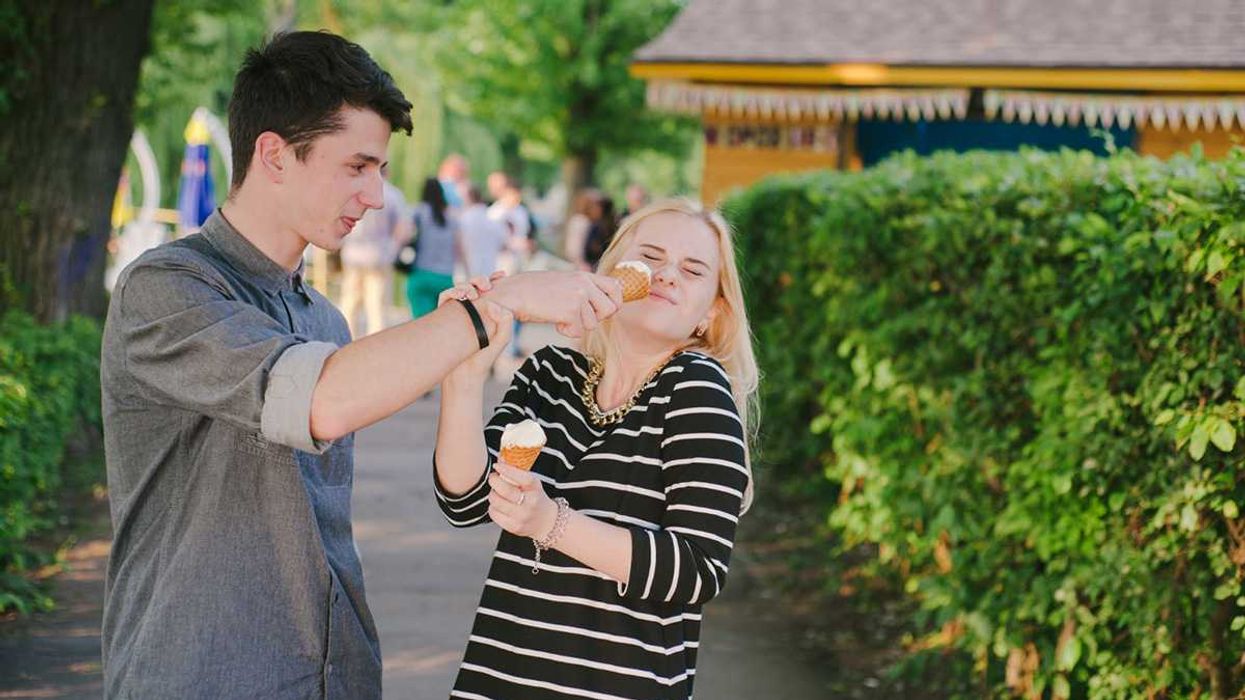When I enter Olafur Eliasson’s studio, I feel like I’m entering a batcave of creativity—a repurposed brewery in the heart of Berlin, it defies its austere brick exterior. In every corner of the Danish-Icelandic artist’s four-floor compound, architects huddle around blueprints, craftsmen tinker with color prisms, technicians challenge light and sound, and a suite of mirrored orbs awaits its public debut. This immersive studio environment calls to mind the full sensory experience felt in Eliasson’s large-scale works, such as “New York City Waterfalls” and “The weather project.” On the top floor is the classroom of Eliasson’s temporary university, Institut für Raumexperimente, which is scheduled to end its five-year run this spring. It offers the only stillness among this buzzing laboratory of 70 plus employees, conducive to growing more quiet ventures such as Little Sun, a solar-powered LED lamp and social business, which has already sold 126,402 lights with a goal of reaching 1.6 billion people without electricity, globally. After my all-access pass through this creative command center, I spoke with Eliasson about this new era of art-making, where collaboration is key to developing projects that enrich our public spaces, bend our notion of space and time, and beg for us to engage.
When work goes out into the public, does it take on different meanings than expected?
I don’t have a solidified idea or dogma under which a work of art is manifesting itself. To create a work of art is like having a great dialogue with somebody. And once the piece of artwork is integrated into a public space, it has to facilitate the same quality of dialogue. And the dialogue might drift in certain directions.
A work of art is never something static. It’s always something on the move and in a process. The process starts with an idea, or a thought, but having an idea is not making a work of art. The creativity and the quality of how it touches the work and transforms our idea, our thinking into doing. How do I suddenly start to make a model? Should I paint it red? Should I scale it up? Should I push it into the context? Should I integrate the context in a more productive way? Should I involve more scientists? And all these steps essentially represent creative choices. And it is within these creative choices that the creative idea gains its potential by touching the world. Deciding whether to make it red is not creative, but to see what role does making it red mean to the world, and how does that produce the work, and how does that work influence the idea of red—this is where the creativity, I think, is to be found.
You talk a lot about the power of creativity, but you have a particular understanding of the meaning of that word. Can you talk about what creativity means to you?
Well, it is the confidence that you can change the world with designing things, with making things, that creative choices are also political choices, that a creative choice is as important as balance-sheet driving choice for a CEO in a company. A creative choice is as high-ranking as any choice in the world. And I want, as an artist, to claim the territory of creativity, because it seems that a lot of essentially financial sector type of people, they toss around the term “creativity” as a kind of decorative layer on the balance sheet. They say, “We were creative,” but what they actually mean is they just found new ways to make even more profit. So creativity for me is a way that we link our ambitions with what consequences they have. It has a force around it. It’s not that I’m against profits— not at all. It’s just like introducing a different set of success criteria. The word “creative” actually means something. It’s not just adding a little quality to your life. It is the question, “What is life altogether?”
[quote position="full" is_quote="true"]Art is capable of actually doing things.[/quote]
So, you think the artist has a responsibility to give back to the greater good?
I think everything is about giving back, but one also has to take. I think of art as a dialogue, a way of staying in touch with the world, and it’s very much about the quality of the taking. You could say the quality of the inhale of everything that we take in from the world, the way we fill up our lungs and inspire ourselves. How do you manifest and do that with a great degree of generosity? And then there is the exhale. You give everything back, you blow out the air and, in that way, it’s like breathing as a dialogue.
The Little Sun is just one model, it’s just one way of saying that art can make huge impacts other places as well, especially when it’s given this ability to address how come we know so much in the world about the climate, for instance, and we do so relatively little. So we are doing something. This discrepancy between knowing and doing—what I teach in my school and what I explore in my studio is this very notion of taking an idea and turning it into action. Whether it’s an aspect of culture that nobody really understands, or something functional that is integrated into the daily life of a billion people such as The Little Sun project, which, for me, is a way to show that the art is capable of actually doing things.
Your school is going to close down in your studio. What will happen after?
Well, I think I will make it into a space for experimenting with my mind. I have a very close relationship with social neuroscientists and with the help of two cognitive people, one working with motor coordination, and the other one with eye movement detection systems and peripheral sight, we will probably set up a little bit of a brain lab. I’m not sure yet, but I’m thinking a lot about it and why not have them sit right in between the architects?...The other day, I had dinner with an astronaut—I almost choked when he said that he had every day 16 sunrises and sunsets. That was the speed of the space station in which he was dining. So clearly there are amazing things still to do for me.
Photos by Studio Olafur Eliasson
















 A frustrated woman at a car dealershipCanva
A frustrated woman at a car dealershipCanva Bee Arthur gif asking "What do you want from me?" via
Bee Arthur gif asking "What do you want from me?" via 
 A couple on a lunch dateCanva
A couple on a lunch dateCanva Gif of Obama saying "Man, that's shady" via
Gif of Obama saying "Man, that's shady" via 
 Gif of confused woman saying "OK"
Gif of confused woman saying "OK" A woman rejects a man's advancesCanva
A woman rejects a man's advancesCanva A couple kissingCanva
A couple kissingCanva
 A house on fireCanva
A house on fireCanva A smoke detector covered in smokeCanva
A smoke detector covered in smokeCanva The Dahl family gofundme
The Dahl family gofundme 
 A smiling couple. Photo credit:
A smiling couple. Photo credit:  Feeding each other ice cream.Photo credit:
Feeding each other ice cream.Photo credit:  An intimate photograph of a couple.Photo credit:
An intimate photograph of a couple.Photo credit:  Playing with food.Photo credit:
Playing with food.Photo credit: 

 A hand reaches for some money on the groundCanva
A hand reaches for some money on the groundCanva
 Lindsey Stirling meet & greet appearance at the Winter NAMM Show in Anaheim, California in 2018
Lindsey Stirling meet & greet appearance at the Winter NAMM Show in Anaheim, California in 2018